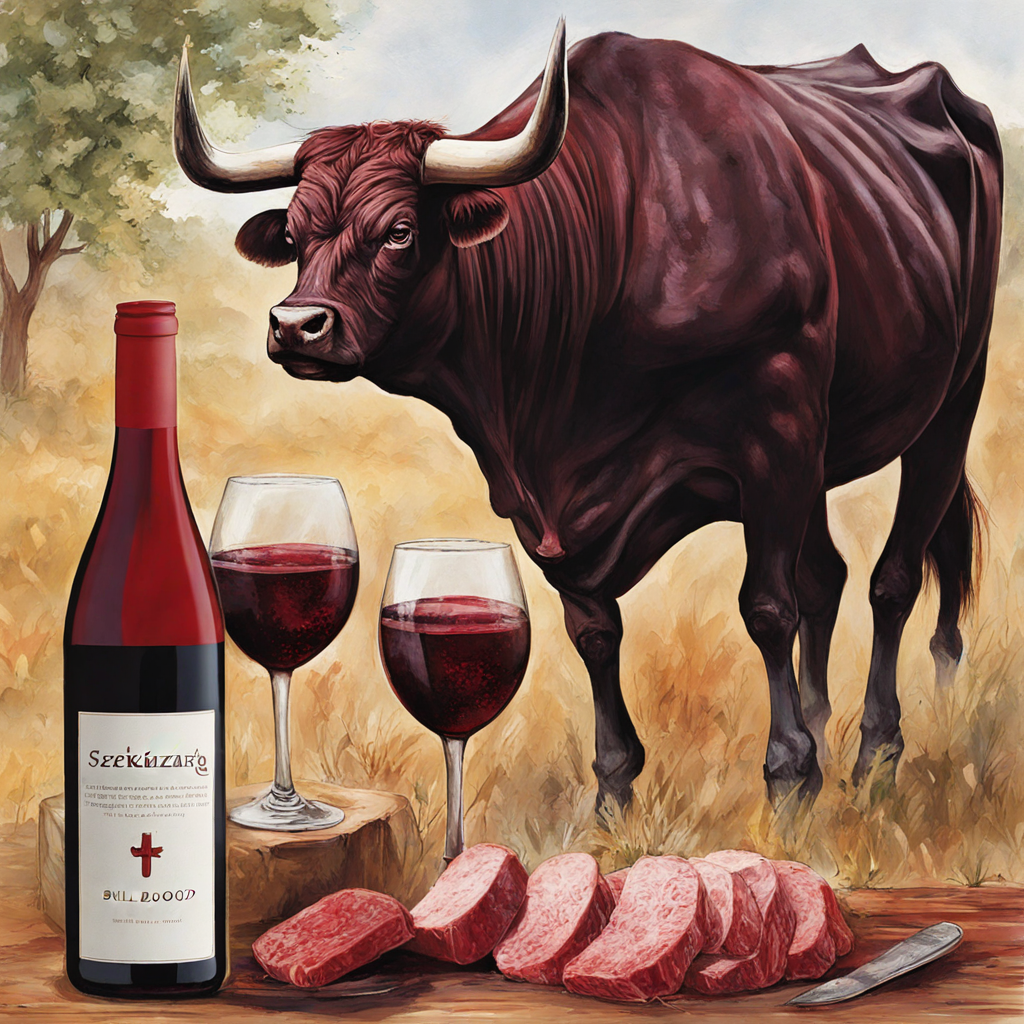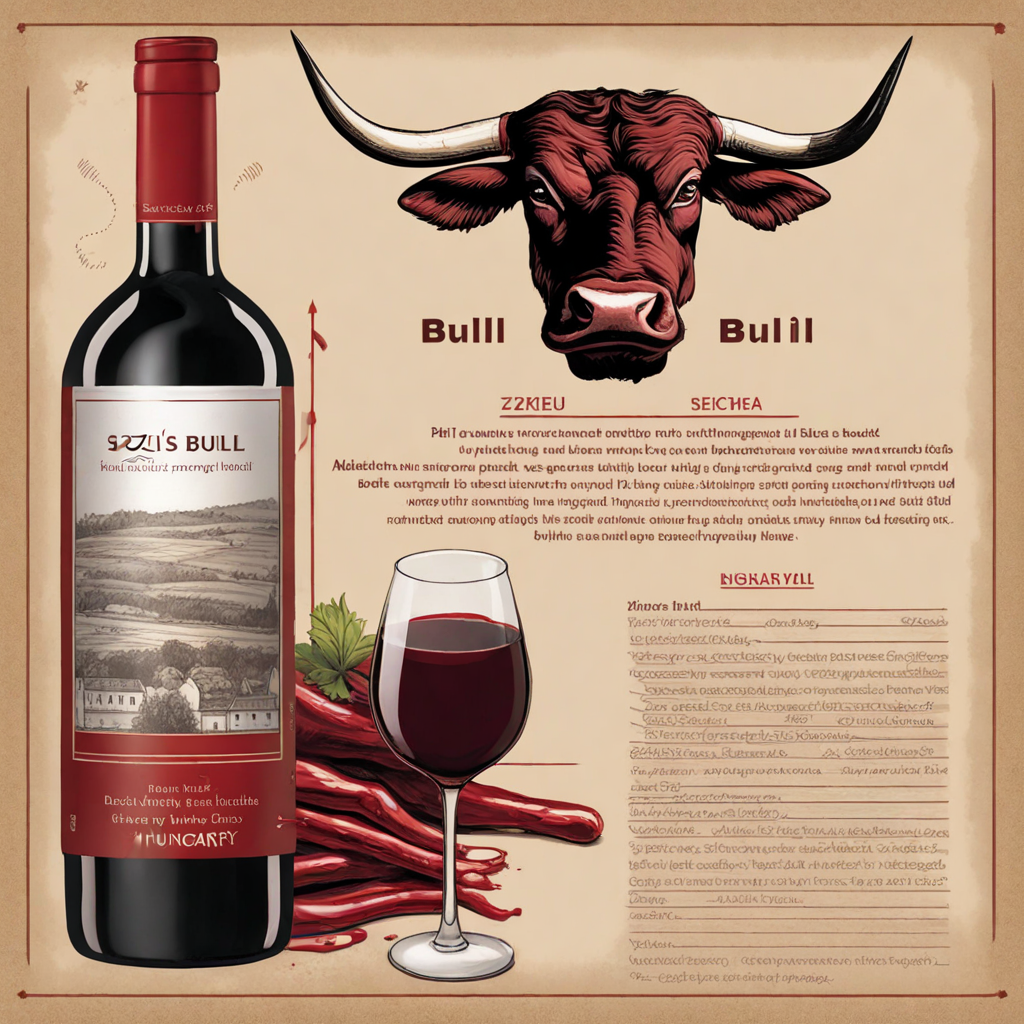Bull's Blood
Bull's Blood, known as "Egri Bikavér" in Hungarian, is a robust red wine that originates from the picturesque Eger wine region in Hungary. This distinctive wine is primarily made from a blend of indigenous grape varieties, including Kékfrankos, Cabernet Sauvignon, and Merlot, resulting in a complex and rich flavor profile. The wine is renowned for its deep, dark color, which reflects its full-bodied nature and the intensity of the flavors that await the palate. It boasts notes of dark fruits such as black cherry and plum, alongside hints of spice, leather, and earthy undertones that create a harmonious balance on the tongue. As you savor Bull's Blood, you'll notice its velvety texture and medium to high tannins, which contribute to its aging potential, allowing the wine to evolve beautifully over time. The finish is long and satisfying, often leaving a lingering warmth that invites you to indulge in another sip. Pairing it with hearty dishes such as goulash, grilled meats, or aged cheeses enhances the experience, as the wine's acidity cuts through richness and complements the flavors of the food. This wine carries a rich history, dating back to the 16th century, when it was named for the legendary tales of warriors and their courage in battle. The mystique of Bull's Blood is encapsulated not only in its taste but also in the stories and traditions that surround its production. Each bottle encapsulates the essence of the Eger region, making it a captivating choice for those looking to explore the depths of Hungarian cuisine and culture through a truly exceptional wine experience.
How It Became This Dish
The Rich History of Bikavér: Hungary's Bull's Blood Wine Origins: A Legacy in the Vineyards Bikavér, which translates to "Bull's Blood," is one of Hungary's most renowned red wines, originating from the historic wine region of Eger in northern Hungary. Its origins date back to the 16th century, a tumultuous time marked by the Ottoman incursions into Hungary. Legend has it that the name "Bikavér" arose from a tale of the defenders of Eger, who, during the Siege of Eger in 1552, fortified themselves with this robust red wine, claiming it gave them the strength of bulls to withstand the enemy. The wine itself is a blend, traditionally composed of several grape varieties, including Kékfrankos (Blaufränkisch), Cabernet Sauvignon, and Merlot, which contribute to its deep color, complex aromas, and rich flavors. The method of blending grapes has evolved over centuries, incorporating local practices and adapting to changing palates. The initial recipes were likely simple, but as winemaking techniques improved, so too did the quality of the wine. Cultural Significance: Wine as a Symbol Bikavér is more than just a beverage; it is a symbol of Hungarian heritage and pride. The wine has played a crucial role in the cultural fabric of Hungary, often appearing in literature, art, and folklore. Its rich color and bold flavor have made it a favorite among locals and tourists alike, often associated with celebrations, feasts, and gatherings. The wine's reputation was bolstered during the 19th century when it was showcased at international exhibitions, gaining recognition well beyond Hungary's borders. In the 1900s, Bikavér became synonymous with quality, especially after the establishment of strict regulations regarding grape varieties and production methods. The wine's popularity surged, leading to a proliferation of vineyards in the Eger region and beyond. The Evolution of Bikavér: A Journey Through Time As the years progressed, so did the winemaking processes and the understanding of terroir—the unique characteristics imparted by the climate, soil, and geography of a region. In the 1960s and 1970s, Hungary's winemaking industry faced challenges, particularly during the communist era when quality often took a backseat to quantity. Many wines, including Bikavér, suffered from inconsistent quality and unfavorable production practices. However, the fall of communism in 1989 marked a renaissance for Hungarian winemaking. A new generation of winemakers emerged, driven by a passion for quality and a desire to restore Hungary’s wine reputation. Innovations in viticulture and vinification techniques allowed for a renewed focus on Bikavér, and the traditional methods were once again celebrated. This revitalization led to a resurgence in the popularity of the wine, both domestically and internationally. In the 1990s, the introduction of stringent regulations redefined Bikavér. The Eger region was designated as a wine-growing area, and the Hungarian Wine Law of 2003 established rules for the production of Bikavér, ensuring that only wines made from specific grape varieties and following traditional methods could bear the name. This emphasis on quality and authenticity helped to solidify Bikavér’s status as a premium wine. Modern Interpretations: A Global Appeal Today, Bikavér is produced not only in Eger but also in other regions of Hungary, including Szekszárd, which has its own unique interpretation of the wine. The modern Bikavér is characterized by its deep ruby color, aromas of dark fruits, spices, and hints of oak, with a full-bodied palate that balances acidity and tannins. Winemakers today experiment with different grape blends and aging processes, leading to a range of styles that cater to diverse tastes. The global appeal of Bikavér has also grown, thanks to the rise of wine tourism and increasing interest in Eastern European wines. Wine enthusiasts around the world are beginning to recognize the quality of Hungarian wines, and Bikavér, in particular, has garnered attention for its flavor profiles and cultural heritage. This has led to a surge in exports, with Bikavér being served in fine dining establishments and wine bars across Europe and beyond. Cultural Celebrations and Festivals Bikavér is celebrated in various cultural festivals throughout Hungary, further solidifying its place in the nation’s identity. The Eger Wine Festival, held annually, features tastings, food pairings, and opportunities to meet the winemakers behind the beloved Bikavér. This festival, along with others across the country, showcases the significance of wine in Hungarian culture, drawing locals and tourists alike to celebrate the rich history and craftsmanship behind this iconic beverage. Pairing Bikavér with traditional Hungarian cuisine, such as goulash, pörkölt (stew), or hearty meat dishes, has become a culinary tradition. The wine’s robust flavors complement the rich and often spicy nature of Hungarian dishes, making it a staple at dining tables during family gatherings and festive occasions. Conclusion: A Wine with a Story The story of Bikavér is one of resilience, cultural significance, and evolving craftsmanship. From its legendary origins during a siege to its modern-day status as a symbol of Hungarian pride, Bikavér embodies the spirit of the nation. As winemakers continue to innovate while respecting traditional methods, Bikavér remains a dynamic and celebrated part of Hungary’s rich culinary heritage. As more people discover and appreciate this unique wine, the legacy of Bikavér will undoubtedly continue to grow, entwined with the stories of those who produce and enjoy it. Whether sipped during a meal, celebrated at a festival, or shared among friends, Bikavér is not just a wine; it is a connection to Hungary’s past, present, and future.
You may like
Discover local flavors from Hungary







